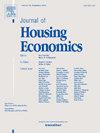多校区划政策的空间溢出效应
IF 2.4
3区 经济学
Q3 ECONOMICS
引用次数: 0
摘要
中国的地方政府已经实施了一系列教育和房地产政策,以促进教育公平,并缓解上学区域内房价的上涨。本文考察了北京市西城区实施多校分区政策后,入学概率变化对周边地区房价的空间溢出效应。我们首先提出了一个理论模型,并得出了可测试的预测。随后,我们利用以前拥有的房屋的交易级数据来评估除了直接治疗效应之外的溢出效应。采用弹性事件研究模型,综合考虑政策公告的前期预期效应和后处理效应。我们的研究结果突出了对西城平均总房屋销售价格的显著负面直接影响(1.5%至2.8%),以及对邻近地区房屋销售价格的显著正面溢出效应(1.1%至1.6%)。此外,外溢效应表现为一般均衡效应,在入学率较好的区域、更小、更靠近西城区的住房单元中更为明显。我们的研究结果表明,在制定稳定房价的区域政策时,政策制定者应该考虑溢出效应,以确保这些政策与更大区域的更广泛目标保持一致。本文章由计算机程序翻译,如有差异,请以英文原文为准。
The spatial spillover effect of the multi-school zoning policies
Local governments in China have implemented a series of education and real estate policies to promote educational equity and mitigate the escalation of housing prices within school attendance zones. This paper examines the spatial spillover effects of changes in the probability of school enrollment, stemming from the implementation of the Multi-School Zoning Policies in Xicheng district, Beijing, on housing prices in neighboring districts. We first present a theoretical model and derive testable predictions. Subsequently, we utilize transaction-level data on previously owned homes to evaluate spillover effects in addition to direct treatment effects. A flexible event study model is employed to incorporate both the anticipatory effect induced by the early policy announcement and the post-treatment effect. Our findings highlight significant negative direct impacts on Xicheng’s average total home sale price (1.5 % to 2.8 %) and noteworthy positive spillover effects on home sale prices in neighboring districts (1.1 % to 1.6 %). Furthermore, the spillover effect operates as a general equilibrium effect, being more pronounced for housing units in better school attendance zones and that are smaller and closer to Xicheng district. Our findings suggest that in formulating regional policies to stabilize housing prices, policy makers should account for spillover effects to ensure that these policies align with the broader objectives of a larger region.
求助全文
通过发布文献求助,成功后即可免费获取论文全文。
去求助
来源期刊

Journal of Housing Economics
Multiple-
CiteScore
3.30
自引率
4.20%
发文量
35
期刊介绍:
The Journal of Housing Economics provides a focal point for the publication of economic research related to housing and encourages papers that bring to bear careful analytical technique on important housing-related questions. The journal covers the broad spectrum of topics and approaches that constitute housing economics, including analysis of important public policy issues.
 求助内容:
求助内容: 应助结果提醒方式:
应助结果提醒方式:


